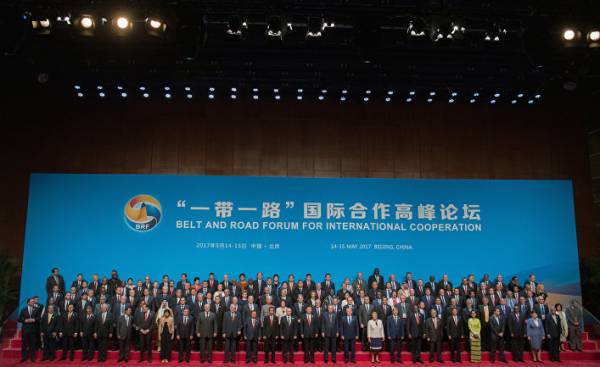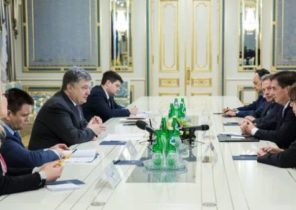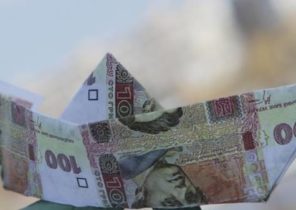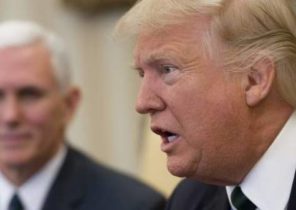
While China is preparing to host the 14 and 15 may the largest summit dedicated to the sensational project “One belt and one road” (OBOR), around the seemingly inevitable rise of China to the main Asian and even world leader, probably will go back up the hype.
Chinese foreign Ministry statements on the “Forum of the belt and road to international cooperation” is the official name of the summit tried to convey the idea that this event is the first “forum for economic cooperation… and we don’t want to give it a political connotation”.
No region shows the tension that exists between the economic and geopolitical consequences of China’s growth, more clearly than Southeast Asia. In the medium and long term to convince the private good intentions of Southeast Asian neighbors and major powers like the United States, the Chinese will need not so much of the summit and the official statements about the mutually beneficial from their point of view, the results of economic diplomacy, how much more clear and open demonstration of their own policy objectives and instruments.
In addition to statements about a long-standing commitment to the foreign policy of peaceful development, intended to convince both domestic and foreign audiences that China’s priority is economic development, and domestic and international stability that it supposedly supports, Chinese leaders have recently sought to create the impression that now China is the main guarantor of globalization. Under President XI Jinping, the this program is accompanied by a diplomatic effort to convince neighbors that China is seeking to create what he calls a “Community of destiny”, where the basis of regional stability and peace lies with economic interdependence.
However, the comments of the Chinese foreign Ministry about the reluctance to politicize OBOR contrary to the allegations that outside of China, many — including some of its neighbours from South-East Asia believe the recent Chinese support several economic initiatives and institutions is part of a broader mercantilist program to strengthen the geopolitical and strategic influence of China in the region and far beyond. That is full of idealism and welcoming of globalization, the rhetoric of China has faced considerable skepticism from foreign policy leaders and business elites outside the country. Have a distrust of what is considered geoeconomic strategies of China, designed primarily to serve national interests.
In the context of Southeast Asia we are witnessing on the one hand the official win-win diplomacy and propaganda of China, and on the other the very real geopolitical tensions that caused by the arrogant behaviour of China. Especially brightly it is expressed in the question of territorial claims in the South China sea. And this contradiction emphasizes the seemingly incompatible notions of economic initiatives of the Chinese in the region. Although the concept of OBOR largely like trying to “Polish” trade, investment, Finance and infrastructural planning in South-East Asia, attention paid to infrastructure development, it seems, is intended to mitigate the negative impression of the more offensive strategy of China by addressing the development needs, especially in the poorest countries of the region.
Nevertheless, the existence of transport and energy infrastructure needs in South-East Asia and China’s willingness to direct policy efforts and resources to meet these needs, yet do not lead to smooth relations between the parties.
Perhaps the most telling example of failed infrastructure deals between China and Southeast Asia is Masonskii hydroelectric project in Kachin state (Myanmar), and this problem still awaits its solution. The refusal of Myanmar from this deal was a turning point in relations between China and Myanmar in the politics of Myanmar as a whole. In other countries of South-East Asia led by China several major projects in transport infrastructure are also faced with many difficulties. They are often associated with the concern that these transactions will bring disproportionate benefits to China. So, in Sri Lanka a change of government led to a revision of a major port project. Meanwhile, developed by China for strategic railway projects in Thailand and Indonesia are distinguished by extreme inconsistency of implementation. But with all the difficulties many of these deals or move forward in a new environment, whether it was canned in favor of other projects.
Although the majority of Chinese projects of its kind in Southeast Asia and related problems began to appear in 2013, OBOR, paid attention to them transport and energy infrastructure shows what deals China expects the new initiative.
However, they are similar to activities carried out under the leadership of China projects in other developing regions such as Africa and Latin America, where Chinese financing and investments combined with transactions in commodities or infrastructure. And, as in other developing regions, the economic and political viability of infrastructure deals OBOR in South East Asia and anywhere else will largely depend on how projects are financed, how they are transparent and how they assess and manage risks. And here for China, its neighbors in Southeast Asia and other countries and organizations, which have experience funding development opens a new opportunity.
In connection with the Chinese project at OBOR most often mentioned three financial institutions: the silk road Fund, Asian infrastructure investment Bank and New development Bank. Although they are all relatively recent and their effectiveness has not yet been tested, the key difference between them is this: while the banks — albeit with China at the head, are of a multilateral nature, the Fund is a unilateral tool of the Chinese government. It is expected that an important unilateral role in the project at OBOR will also be given to public-private banks, including China development Bank. We already know that such unilateral financial institutions are opaque and give preference to interstate transactions, while the multilateral development banks, supported by China, much more inclined to use a more transparent assessment tools of projects and risk analysis and to be open to partnerships between government and private business. Moreover, the latter is likely to be very willing to go on exchanging ideas and cooperation with regional bodies such as the Association of South-East Asia and the Asian development Bank.
In preparation for the forum OBOR Minister of foreign Affairs of China Wang Yi said that the initiative “One belt and one road” is “the most important public good that China gives to the world.” The best way to make believe that this initiative will indeed be implemented and accepted as a public good — and not just as a tool to promote economic and geopolitical interests of China will be supporting China, its neighbours of South-East Asia and other interested countries and institutions to a maximum of fiscal responsibility, openness and transparency in the project at OBOR. Ultimately, all this will require understanding and satisfying the desires of those people whose lives will be affected by these grandiose projects.
Matt Ferchen staff researcher, Center for global policy Carnegie-Tsinghua in Beijing.







